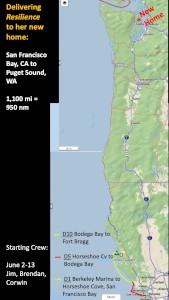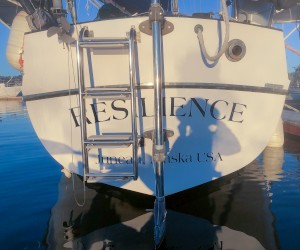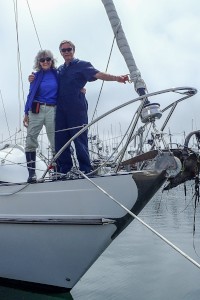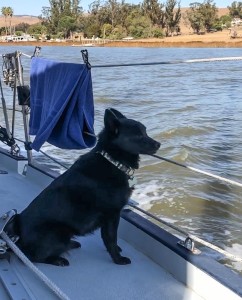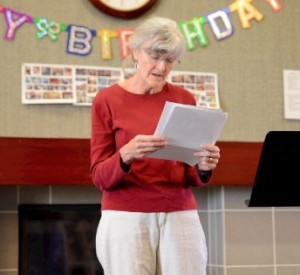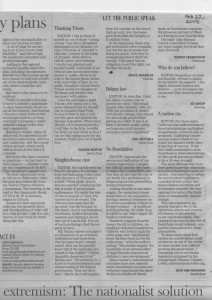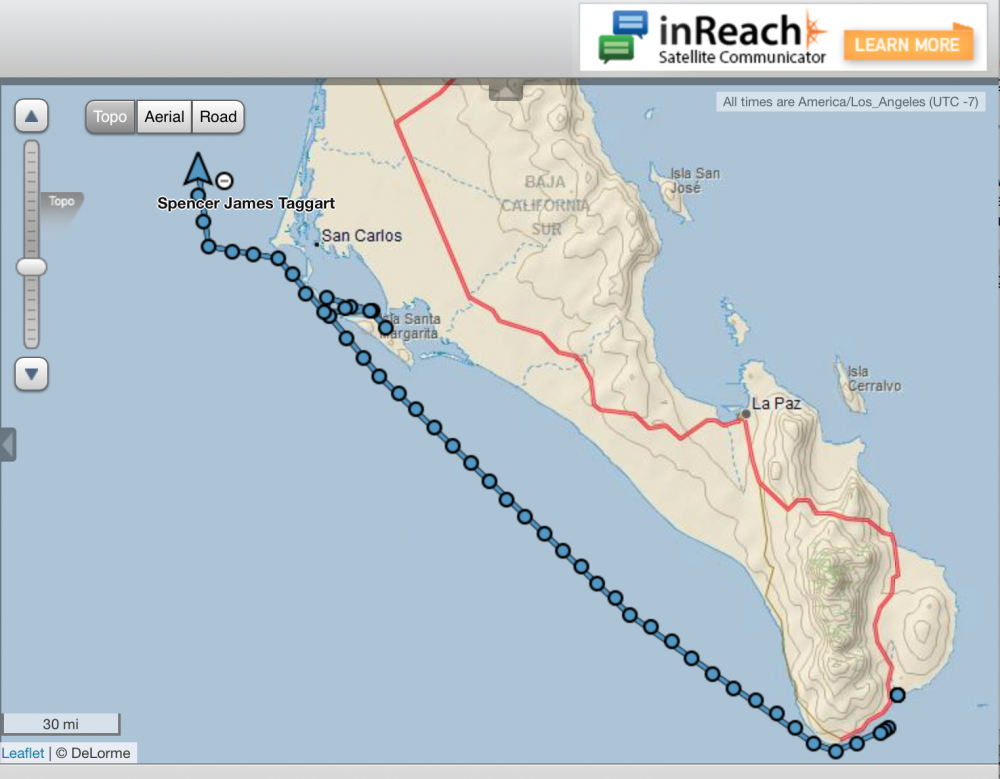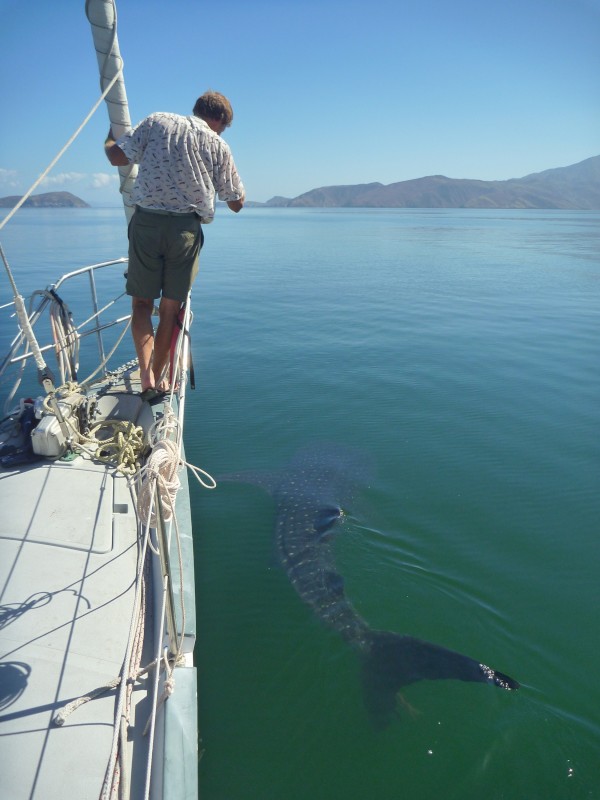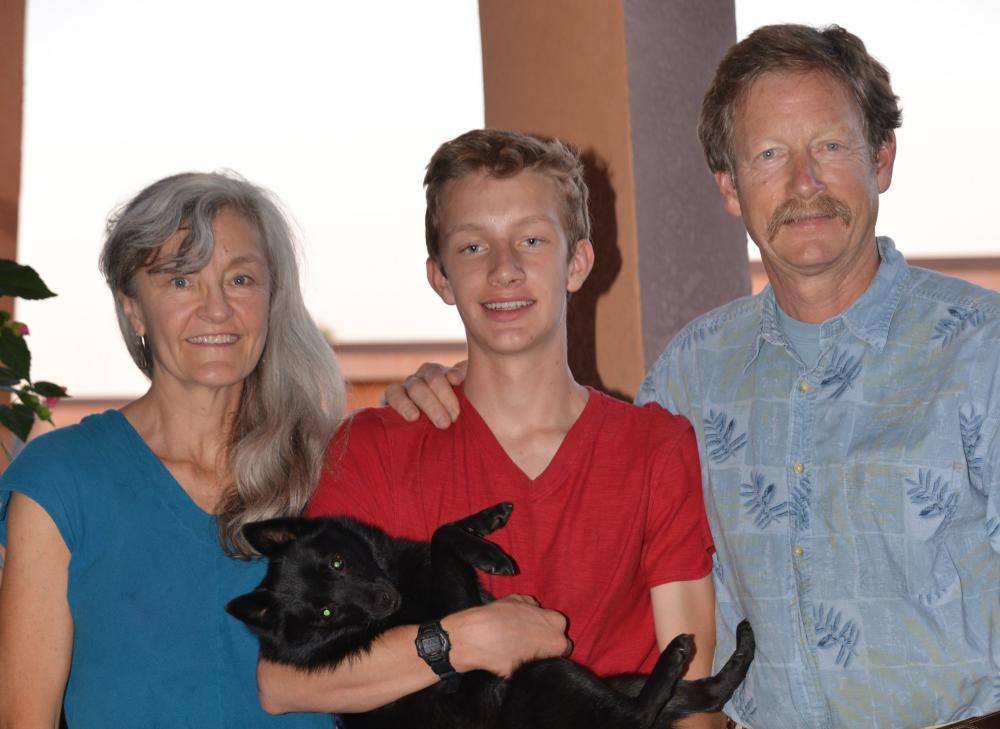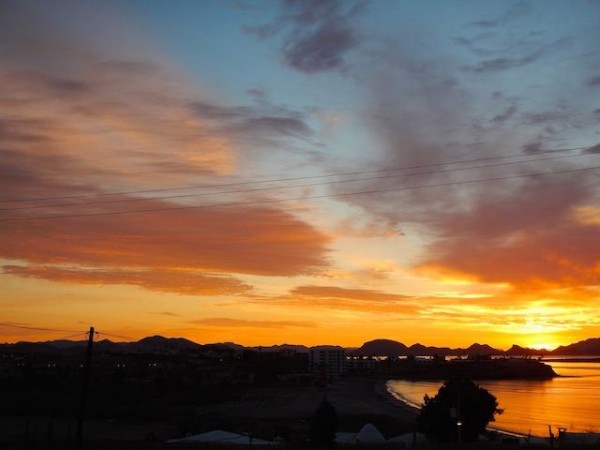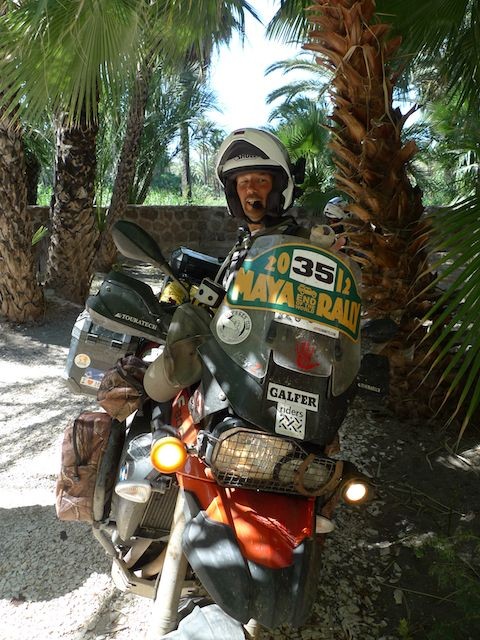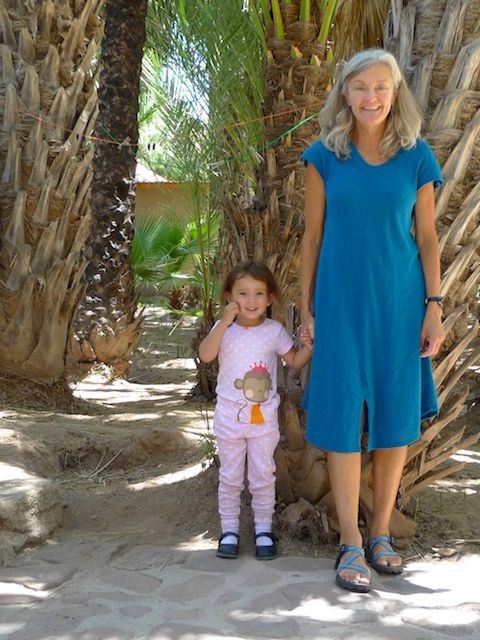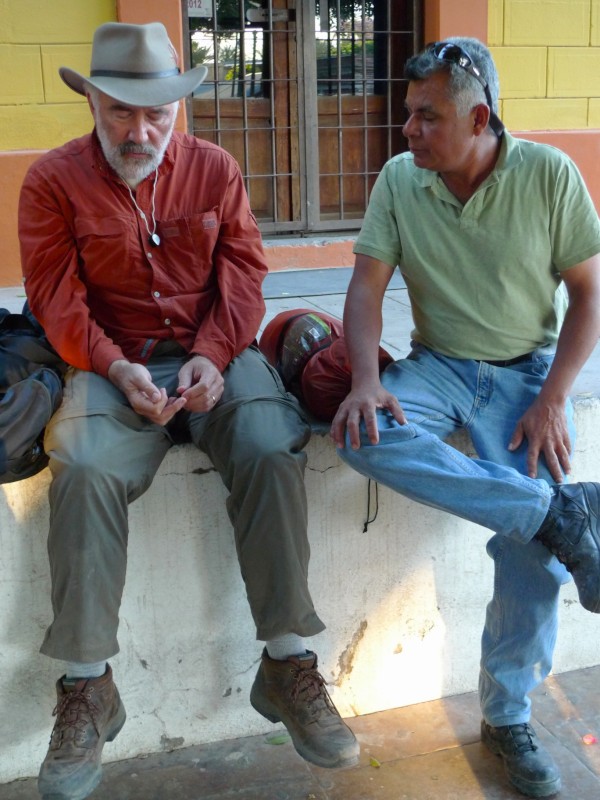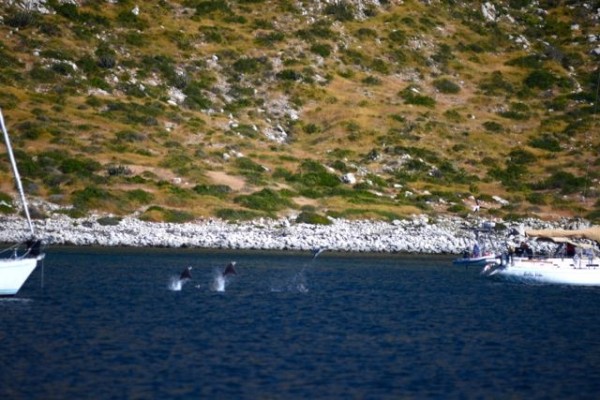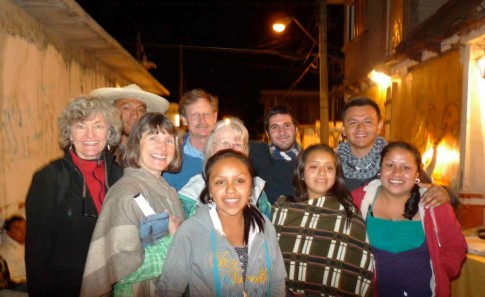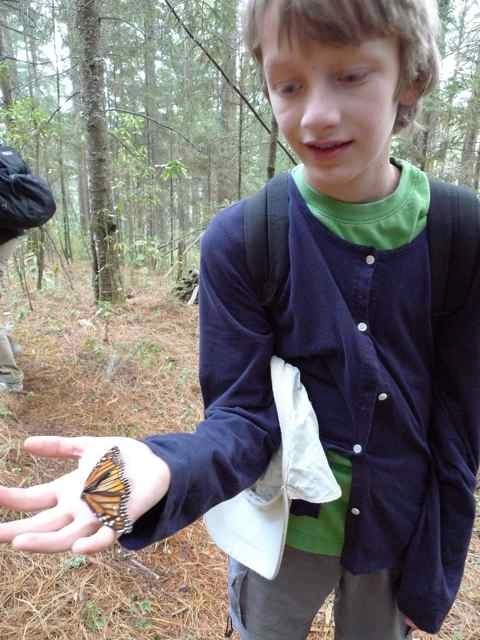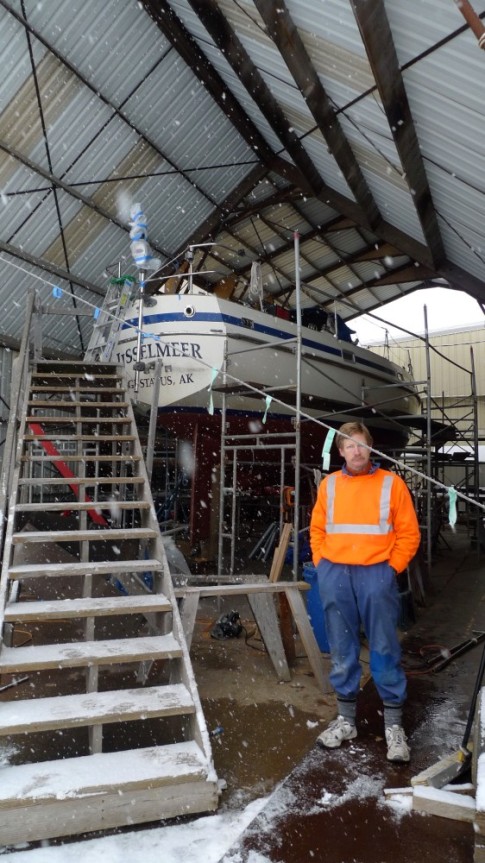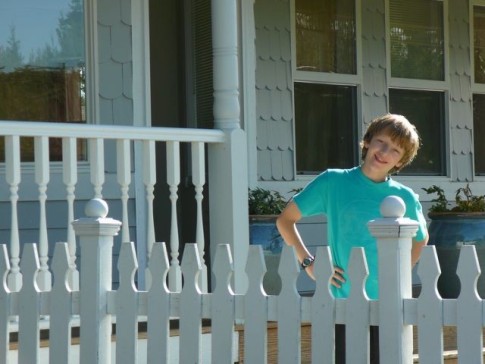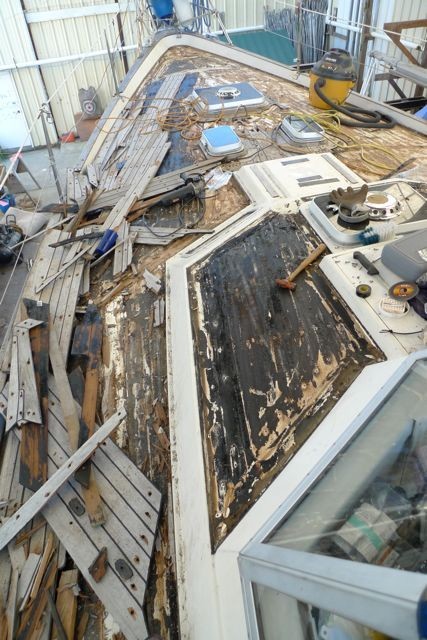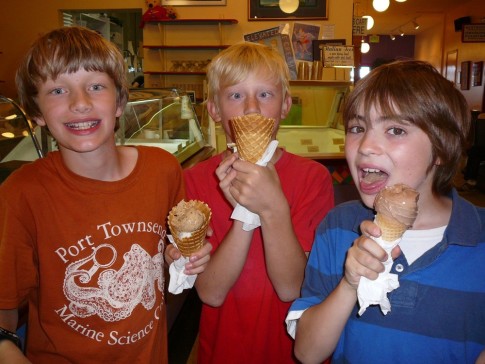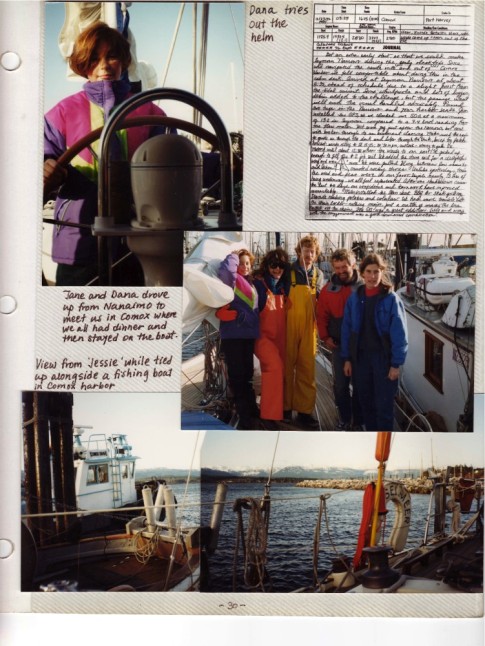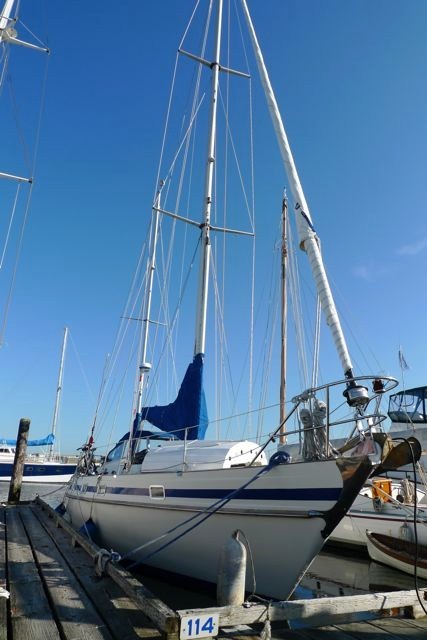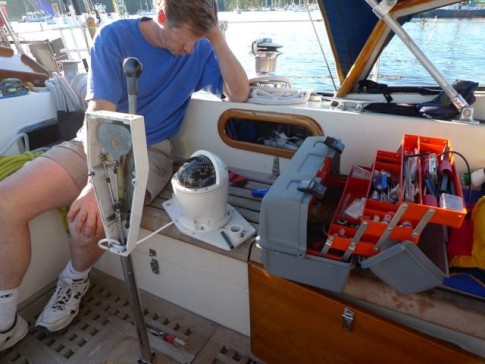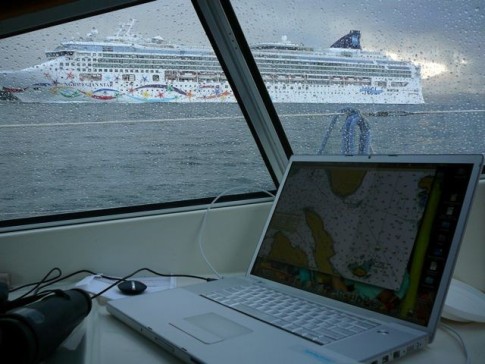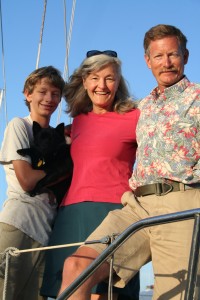MatTag Sailabout
Stories, photos, videos, and natural history updates from a family of three traveling from Alaska to Mexico on their sailboat with their Schipperke.
| Vessel Name: | RESILIENCE |
| Vessel Make/Model: | Contest 44 |
| Hailing Port: | Juneau, Alaska |
| Crew: | Beth Mathews, Jim and Glen Taggart |
| About: | |
| Extra: | 2016: Last year Jim delivered our sailboat from Baja to San Francisco Bay where Glen and I met him for the final leg up the Petaluma River to her new home. Resilience is now moored in the Petaluma Marina, only 20 miles south of our land home in Santa Rosa. |
| Social: |
22 June 2023 | Fort Bragg
Northbound Expedition: San Francisco Bay to Puget Sound
While I as on my book tour for Deep Waters*, Jim's been preparing Resilience for the big move north from San Francisco Bay aree to our new home in Puget Sound, Washington. For the first 2 weeks in June, Jim and crew--Brendan and Corwin--were geared up to start the journey from CA partway to her new [...]
04 December 2022 | Sonoma County
Shadow selfie with Resilience
Shadow selfie from our pedalboard, my favorite way to explore and go birding. Wishing you a fulfilling new year!
22 July 2020 | Bodega Bay, CA
Wilderness with a Big W
Day 40 aboard S/V Resilience*: Last Saturday (7/11), we ducked out under San Francisco's Golden Gate Bridge and motored north into 4-5 foot seas ~4 hours to the shelter of Drakes Bay, off Point Reyes National Seashore. The contrast with exploring the calm, warm-water Delta is striking. Everything [...]
18 December 2019 | Petaluma River
Edgy déjà vu: Petaluma River Retreat from Kincaid Fire Smoke
The Kincade fire began on October 23, 2019 and eventually consumed 78,000 acres--the largest wildfire Sonoma County has ever experienced. The first whiffs of smoke sparked an edgy déjà vu. At noon that day, Jim left our home in Santa Rosa for Petaluma to do some work on our sailboat, planning to return that evening. Although Santa Rosa did not experience an imminent threat, as the Air Quality Index rose, and high-wind forecasts persisted, we decided to shelter on Resilience and head down river to San Francisco. Leaving also meant we could offer our home to a family who had been evacuated from Windsor or Healdsburg, the heart of the Kincaid fire. This short video chronicles our oddly serene trip down the Petaluma River, through agricultural land and past a bucolic small town.
10 January 2016 | Santa Rosa, Ca
VIDEO: Beth reads "The Third Try," a story about releasing fishing line snarled around the prop
Beth Mathews is a marine biologist and writer who set out on a three-year sailing adventure from Alaska to Mexico with her ten-year-old son and husband, after her husband had a debilitating brainstem stroke. In this video, she reads about snorkeling beneath the boat, while in Mexico, to cut the boat's [...]
06 January 2016 | Petaluma Marina
Make a Difference in 2016
With the New Year's first week about to vaporize, I paused today while walking in downtown Petaluma (20 miles south of Santa Rosa) to think about what I had done last year that I wanted to do more of in 2016. The list started with "exercise." Then I remembered that in 2015, I submitted a letter to the [...]
Sperm Whale!
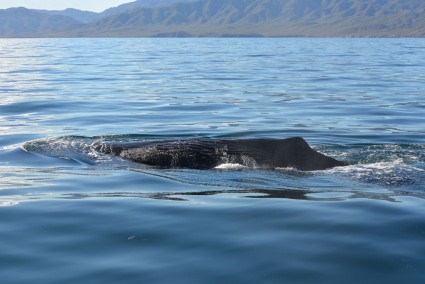
Glen and I scramble to the foredeck. I call back over my shoulder, "What kind is it?"
"I didn't get a good look," Jim answers. "Maybe a humpback."
Glen and I look down at the smooth slick of ocean left where the whale blew seconds earlier.
The whale surfaces and blows again. Something is different from a humpback. I am looking through my camera viewfinder, so I am slower to put the puzzle pieces together: dorsal fin low and rounded, fore-body more flat compared to a humpback, whale acts like a humpback that is resting or sleeping. On the second blow, I notice the skin. Dark and folded, crenulated, like a fan folded into leather.
"It's a sperm whale!" I shout for Jim to hear. "Glen, it's a sperm whale!" I repeat as if he hadn't heard my first exclamation.
"Cool!"
Glen is next to me at the bow pulput. The whale surfaces and blows again, barely moving forward.
I have seen this species before, in the North Atlantic, 100 miles off of Halifax, Nova Scotia. Three decades ago I spent 10 days helping Hal Whitehead and his graduate students collect the first biopsy samples for genetic studies from sperm whales.
"Jim, turn to port," I say. We need to turn now to avoid a collision. This whale is barely moving.
Shortly after sunrise that morning, we left a small cove on hour north of La Paz, on the southeast end of Baja peninsula. We were finally starting our journey to mainland Mexico.
When he saw the whale ahead, Jim slowed the boat from our 7-knot cruising speed. The sperm whale - a species not commonly seen in this channel - surfaced right in our path. We'd not seen any blows earlier, probably because he'd been down for a long time.
Sperm whales are the largest of the toothed whales, but this individual is small, about 30-35 feet long. I'd guess it is a young male because it is alone. Most females stay with their mother's group for life, an extended family that roams the mid-latitudes and up to about 40 degrees north and south. This species has a social structure nearly identical to that of African elephants. Young males eventually splinter off from their mother's group to travel in bachelor herds, or later, alone. Except of course during the breeding season when successful males join and defend a harem. Bulls grow to 60-feet and 60 tons, or more, whereas females top out around 36 feet and 27 tons.
Sperm whales can dive as deep as a mile. Well before that depth, our rib cages would be crushed by the pressure. To figure out the pressure at a mile deep, we add one atmosphere of pressure for every 10 meters in a mile. At a mile down, that's 1,700 times the pressure your skin and body are currently experiencing.
How do these whales dive so deep without damage? Sperm whales exhale before diving, so there's not a lot of air in their lungs to start. And, their ribs are floating, so they don't snap in two like ours would under much less pressure.
Deep diving whales have inherited other ways to avoid problems while diving. For example, the air in the most distal and delicate pockets of alveolar tissue, where gas exchange occurs, is pressed out of these spaces first by the increasing pressure. This air moves up into the thicker branches and trunk of their upside down 'lung tree' (in which the leaves would be the thin-walled alveoli).
The specific microstructure of a sperm whale's lungs sequentially pushes the air from the smallest active air exchange chambers into larger dead air spaces, where the thicker tissue can collapse together and re-inflate later without incident, eliminating the potential for embolisms. The volume of air present in the lungs at the surface steadily decreases as the pressure increases; on the way back up, the held air will return to its original volume.
Sperm whales can be recognized from long distances by their blows. The blow is angled forward and to the left because of their unusual head and nasal passage anatomy, a fact well known to - and used by - whale hunters.
The sperm whale off our bow breathes about 15 times, letting us get a good look. A humpback usually replenishes its oxygen stores in three to five breaths, but then they are shallow divers, rarely exceeding 20-minutes underwater.
The whale is now ahead of us several hundred meters. We watch until it dives. As he tilts down almost vertical to the water, he raises wide, drooping flukes. Our depth meter says we are in water 720 feet deep.
Will the whale head down and down and down, beyond where light penetrates, to search with pulsed echolocation clicks for squid? Or, is he traveling north, up the Sea of Cortez to find better feeding grounds?
Whatever his destination, we feel fortunate to have crossed paths.
[For more photos of the sperm whale, check out the Gallery.]
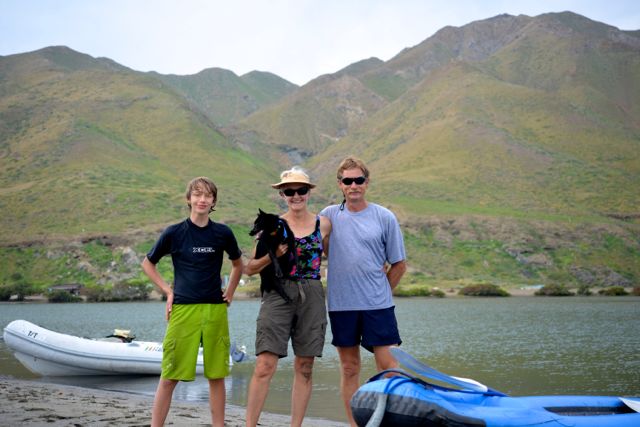 |
Our 2nd stop during our passage south from San Diego to Cabo San Lucas with the 2012 Baja Ha Ha. (This is where Jim is June 20+ 2015)
56 Photos
Created 21 June 2015
|
|
Jim has prepped & is sailing/bashing our sailboat up the outer coast of Baja.
4 Photos
Created 19 June 2015
|
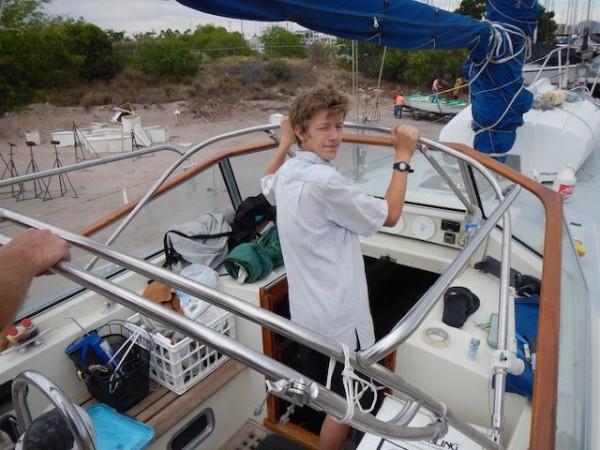 |
Boat painting continues while we pull the mainsail out of the boat and reattach it.
12 Photos
Created 5 April 2014
|
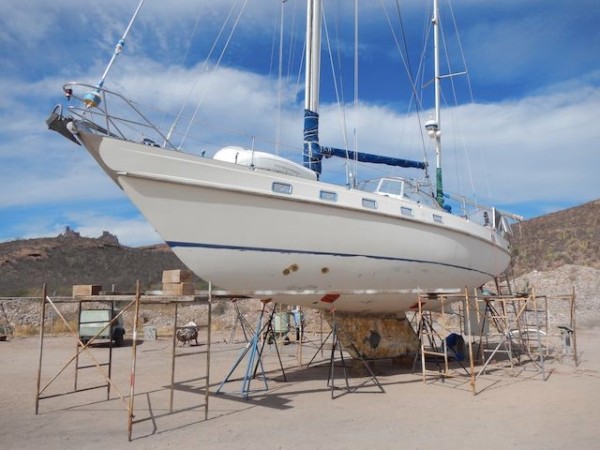 |
Beth and Glen join Jim over Glen's spring vacation in San Carlos, Mexico where the boat is hauled out for painting.
26 Photos
Created 3 April 2014
|
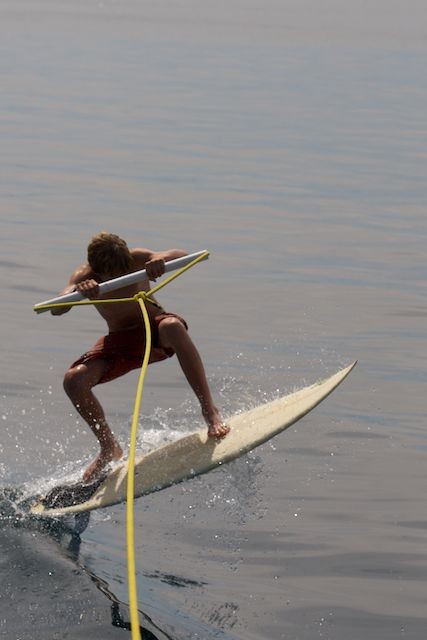 |
Glen surfs his new board by being towed behind our sailboat as we travel north in the Sea of Cortez.
9 Photos
Created 13 June 2013
|
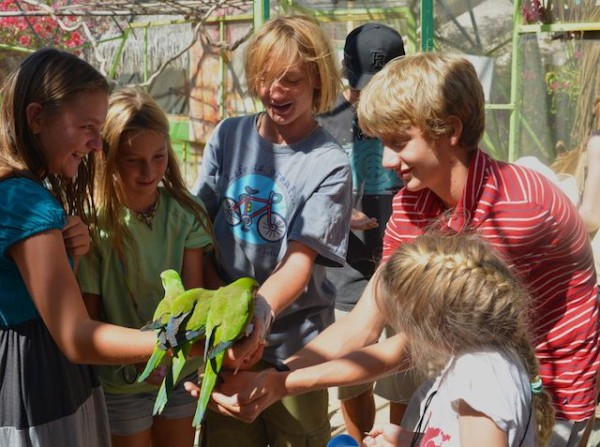 |
Nine of us from 5 family boats visited La Paz's Serpentarium. The highlight was the aviary, where we all got to feed birds that ate out of our hands.
41 Photos
Created 1 June 2013
|
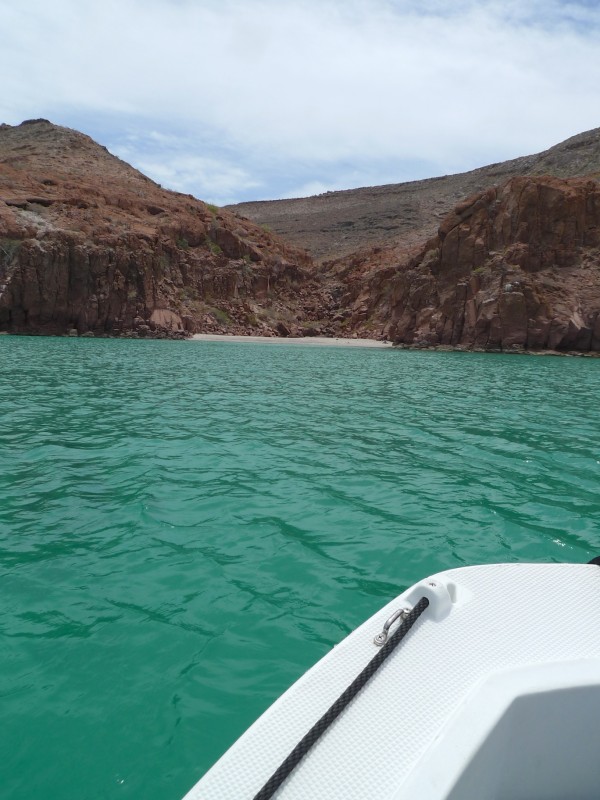 |
We loved getting close to the cactus and volcanic rock on this steep, rocky section above a white beach along the lower Sea of Cortez.
25 Photos
Created 24 May 2013
|
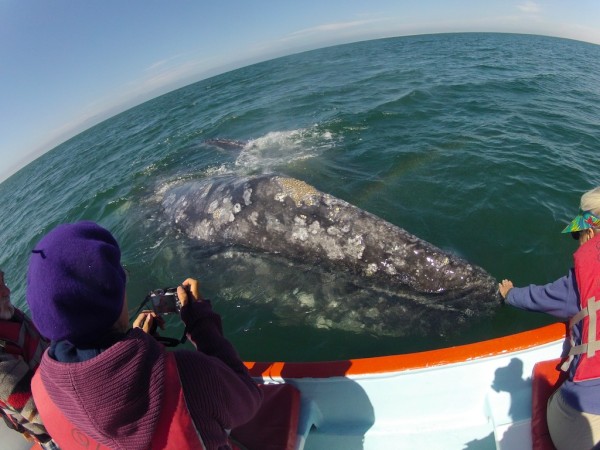 |
Several mother-calf pairs of gray whales interacted with our boat and us in San Ignacio Lagoon -- an amazing experience.
16 Photos
Created 5 May 2013
|
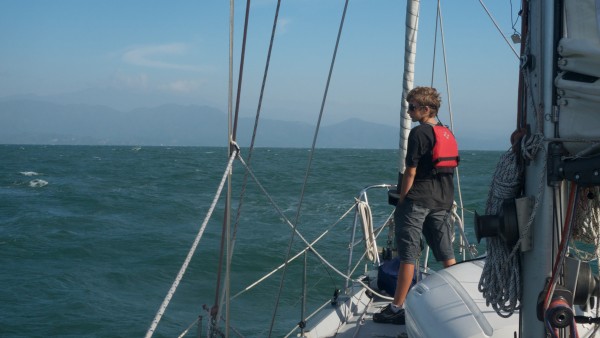 |
On our first day in San Blas we toured the town and ruins with fellow boaters from Lady Carolina
12 Photos
Created 25 February 2013
|
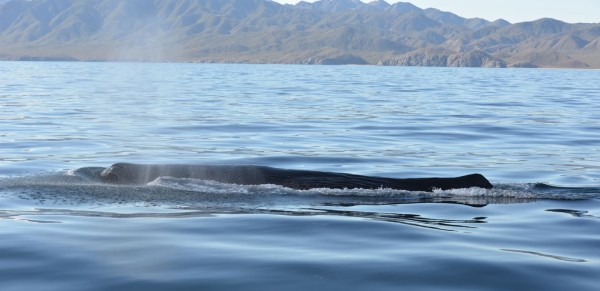 |
East of La Paz, in Cerralvo Channel, we encounter a lone, young sperm whale.
6 Photos
Created 26 January 2013
|
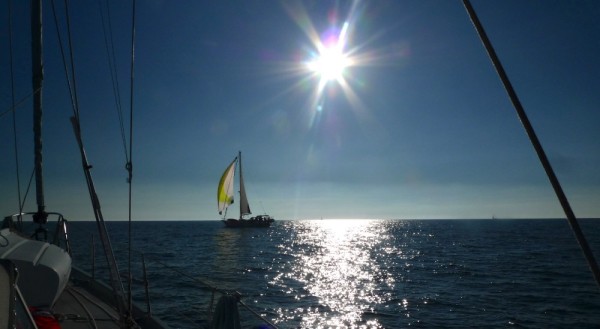 |
San Diego to Bahia de los Tortugas, including Glen's first tuna (under full sail) and our first overnight sailing.
35 Photos
Created 30 December 2012
|
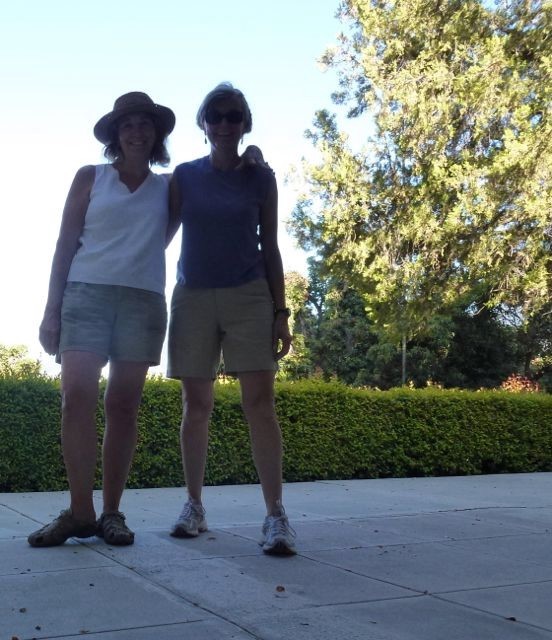 |
Glen and Beth move back to Alameda from Ojai; Glen attends Cazadero Music Camp; we decide to bail on maintaining teak cap rails and paint (!) them instead.
70 Photos
Created 19 December 2012
|
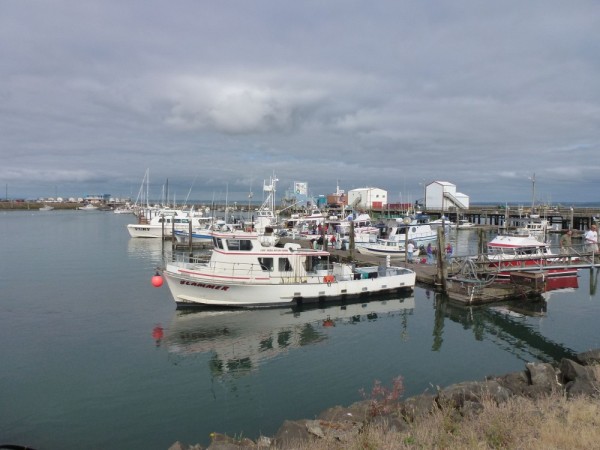 |
We are coastal hopping our way south, pausing to wait for very good weather and to experience small communities and people along the way.
16 Photos
Created 1 September 2011
|
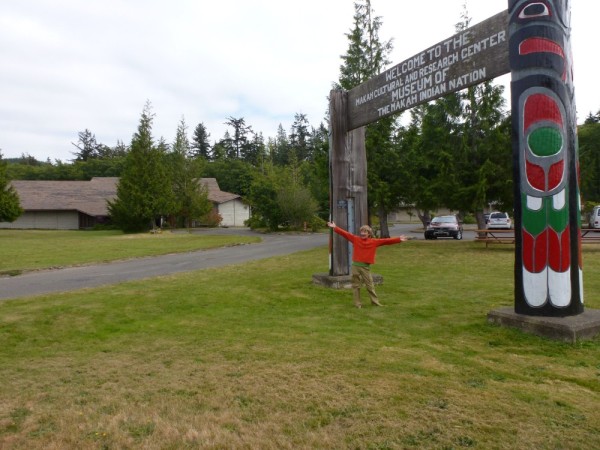 |
Still some essential projects to complete before heading out past Cape Flattery. Made time to visit the fantastic Makah Indian museum in Neah Bay.
9 Photos
Created 11 August 2011
|
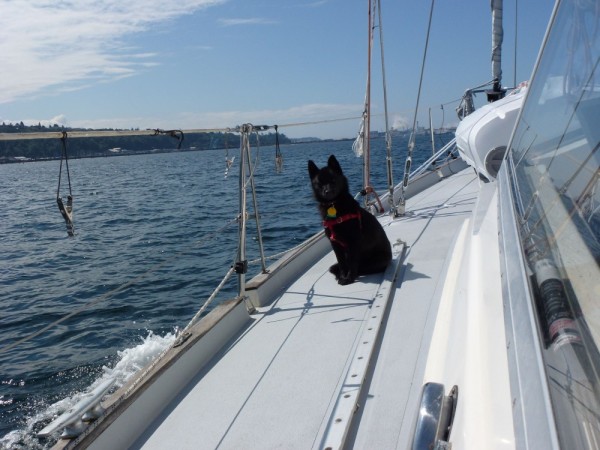 |
Last days in Port Townsend getting ready to start our offshore trip. First leg to Port Angeles; fogged out on Aug 7.
30 Photos
Created 8 August 2011
|
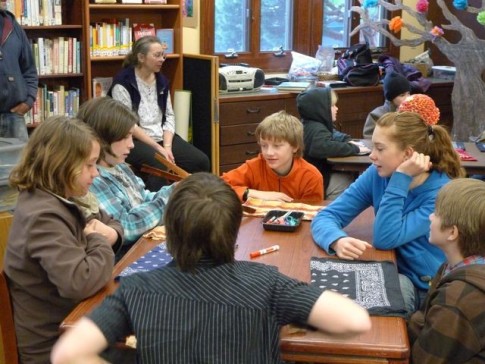 |
We launch our new main sail and discover 2 excellent, free, interactive educational web sites.
26 Photos
Created 29 April 2011
|
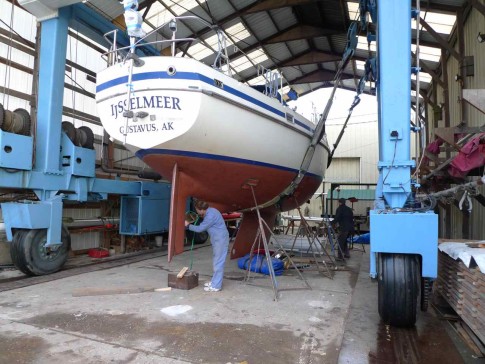 |
Ijsselmeer gets back in the water and is remasted. Christmas on board and with Nan and Ina.
6 Photos | 1 Sub-Album
Created 23 March 2011
|
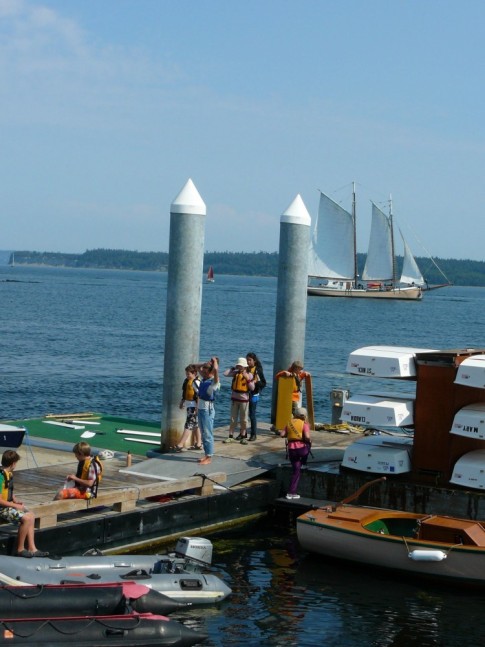 |
We started Ijsselmeer's re-rigging project with Brion Toss, Glen took a sailing class, and we all enjoyed PT's sunny summer.
14 Photos
Created 21 January 2011
|
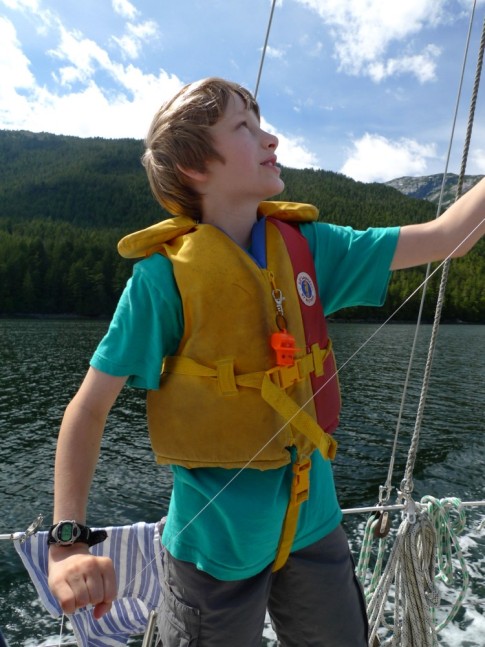 |
We had two beautiful days traveling down through the inside passage to an anchorage just south of Bella, Bella. Glen discovered kite-flying off the stern.
26 Photos
Created 29 July 2010
|
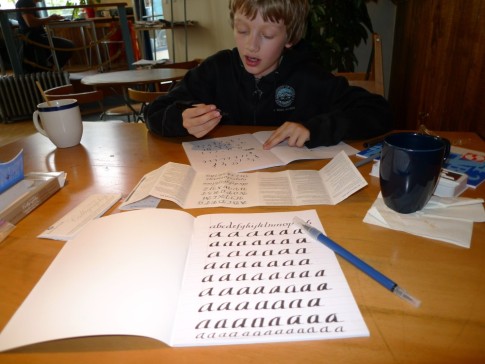 |
Jun 29-Jul 4: We spent a few extra days in Prince Rupert, British Columbia to do some work on Ijsselmeer, and we were also delayed by the weather.
7 Photos
Created 29 July 2010
|

